Big Little Lies: How Smithies are Fighting Disinformation
Alum News
Disinformation is degrading our democracy. Smithies are striving to shore it up.
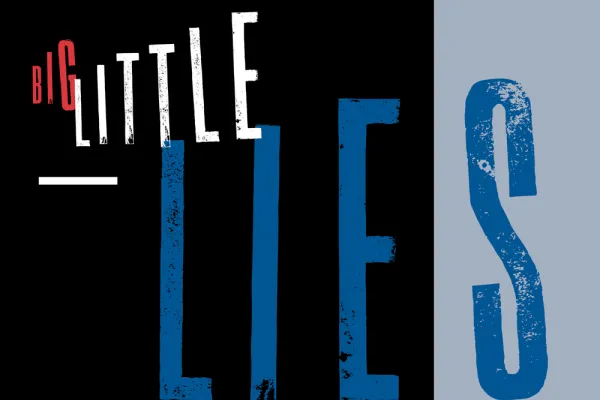
Published November 14, 2022
Within days of buying Twitter in October, Elon Musk spread misinformation on the platform. He tweeted—then deleted—an observation to his 112 million followers about the attack on Paul Pelosi, husband of U.S. House Speaker Nancy Pelosi. Musk linked to an anti-LGBTQ conspiracy theory about the attack from a website that, according to the Los Angeles Times, once reported that Hillary Clinton had died on 9/11 and had been replaced with a body double.
Misinformation and disinformation affect local communities too. Last year in Boston, a false story began circulating that Michelle Wu, the city’s first woman and first person of color to be elected mayor, was experiencing panic attacks. The tale implied she was unfit for office. It spread “through online comment sections and right-wing whisper networks,” according to The Boston Globe, eventually reaching political circles and local news organizations. The Globe headlined its story “For Wu’s critics, a powerful tool: misinformation.”
These are just two instances of misinformation and disinformation battering our public discourse. You could probably cite at least two more examples drawn from this week’s news alone. Think doctored videos. Dubious websites. Fake Twitter accounts. Conspiratorial TikTok posts. People showing up at school board meetings offering “facts” that aren’t.
Coupled with gerrymandering and attacks on voters’ rights, misinformation and disinformation threaten the very foundation of our nation. “Are we as a country going to allow lies to bring down our democracy?” asks Laura Crimaldi ’01, part of a team of Globe reporters who won a 2021 Pulitzer Prize. Smith alums and faculty working in journalism, government, philanthropy, and more are grappling with that question.
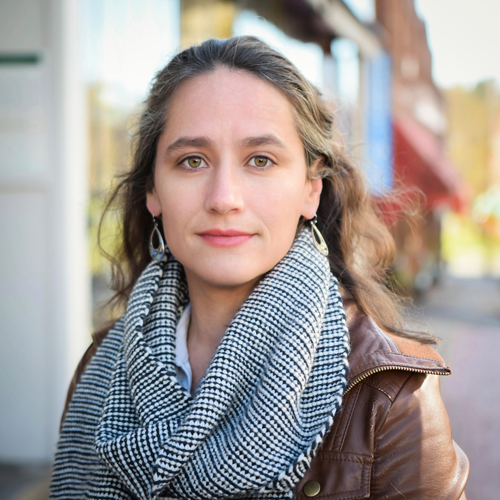
Who Needs Journalism?
The Press, Democratic Practice—and the Liberal Arts
by Naila Moreira
Some disinformation claims are so ludicrous, it would be easy to dismiss them if they didn’t lead to hate speech and political violence. “A lot of the stories we’re covering are examples of misinformation and disinformation manifesting themselves into real-life actions,” Crimaldi notes.
A 2022 article from the Brookings Institution, a think tank in Washington, D.C., concluded that “misinformation is eroding the public’s confidence in democracy.” The story included results from the Collaborative Multiracial Post-Election Survey, a national survey on political and social issues, which found that 40% of white Americans believe there was “definitely” or “probably” voter fraud in the 2020 presidential election, while another 17% believe there “might have been” fraud. Others were less likely to trust such claims.
As The Washington Post, PBS, and other news organizations have reported, disinformation on social media has sped the growth of white supremacy, and some white voters who would denounce the supremacist label are still fearful of what demographic changes mean for them.
As the United States becomes more multiracial and multicultural, “we’re seeing enormous pushback,” says April Simpson ’06, a senior reporter covering racial equity at the Center for Public Integrity, a nonprofit news organization. “We’re also seeing political leaders put forward disinformation that plays into stereotypes and ultimately is an attempt to retain power and uphold existing hierarchies and white supremacy.”
Our multiracial democracy, she points out, “is still very new. And therefore, it’s very fragile.”
Beyond white angst, we’re experiencing a confluence of other news and disinformation trends that, when combined, lead to a “pernicious influence” on our democracy, argues Brent Durbin, associate professor of government at Smith and an expert on the politics of data.
The Walter Cronkite era—when many Americans supposedly agreed upon a common set of facts about the news—is long gone, if it ever existed. In its place, we have ways for consumers to seek out news that confirms “what they believe already,” Durbin says. Then there’s the role of information warfare, with Russia trying to sway U.S. elections through social media disinformation campaigns. Half of Americans now turn at least sometimes to social media for their news, according to the Pew Research Center, a nonpartisan organization that conducts public opinion polling, demographic research, and other social science research.
Making Money, Grabbing Power
Misinformation and disinformation aren’t new. They previously made their mark through our nation’s long history of biased news coverage. The Los Angeles Times, as one example, published an apology in 2020 for its past coverage of the city’s nonwhite population. It cited years of questionable reporting and editorials, from the paper’s support for interning Japanese Americans during World War II to its 1981 story headlined “Marauders From Inner City Prey on L.A.’s Suburbs.” That story “reinforced pernicious stereotypes that Black and Latino Angelenos were thieves, rapists, and killers,” editors admitted in the apology. History is rife with illustrations of biased reporting, giving us all reason to be skeptical of the news.
Misleading information is not limited to words. “The history of images being used as propaganda to propagate a certain narrative is as old as image-making,” says Carolina Miranda ’93, art and design columnist for the Los Angeles Times. Consider how much Western art was devoted to promoting Christianity as the one true faith. The difference now is that misleading photos and videos can spread much more rapidly. “The technical ability for anybody to do it with Adobe Photoshop, or artificial intelligence rendering bots creating imagery, raises a lot of concerns about the speed with which imagery can be put into the ether and treated as fact,” Miranda says.
Even photos or videos that appear straightforward may not be. What does the image leave out? Would a different image have told the story better? Jehan Jillani ’13, a visuals editor at The Atlantic, says one of her top criteria for hiring photographers is “Can I trust them not to manipulate the scene?”
Along with a means of amassing power, disinformation is also a moneymaker. The longer we linger on a site or broadcast, the more ads we get served. “These social media platforms want you to stick on their sites for as long as possible. And the more outrage, the more emotion something on their website evokes, the longer that you’re likely to stay on it,” Jillani says. “They don’t really have an incentive to make sure that what they’re putting up on their website is actually accurate, because they’re not driven by accuracy.”
It’s no secret that local journalism has been decimated in the last decade, and that vacuum creates an opening for websites, newsletters, and social media from disinformation opportunists. “Even those of us who live in places with local newspapers, the truth is many of those newspapers are a shell of what they used to be. The number of reporters, the depth of coverage, has been in steady decline for the past 15 years,” says Kathy Im ’94, director of the journalism and media program at the MacArthur Foundation, a private organization whose priorities include supporting the role of journalism in democracy.
More than a fifth of Americans live in news deserts with limited or no reporting on local government and concerns, according to research by Penny Abernathy, visiting professor at Northwestern University. Since 2005, the country has lost more than a quarter of its newspapers. By 2025, a third may be gone.
Disinformation affects governments too. It can impact which policies are enacted. Numerous state legislatures have passed restrictive laws to limit early and absentee voting, with legislators often justifying their decisions with misinformation and disinformation, according to Molly Reynolds ’06, a senior fellow in governance studies at Brookings.
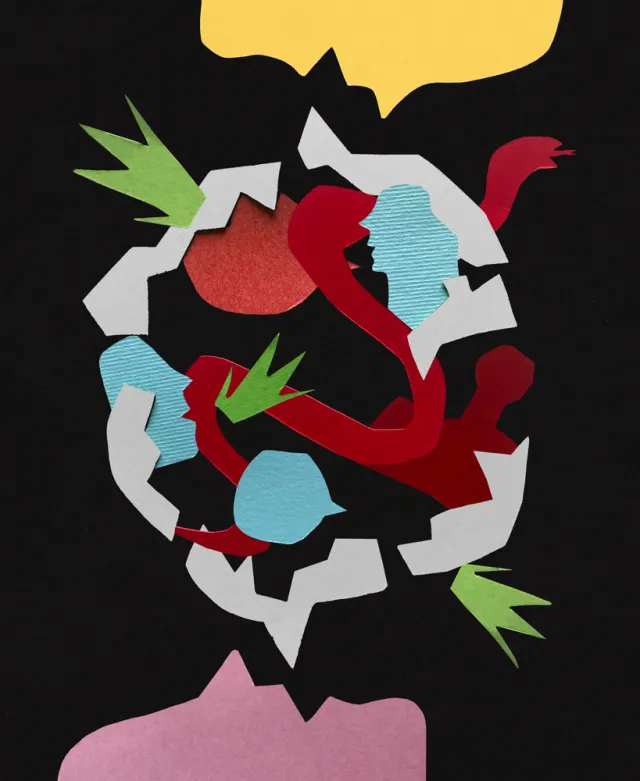
Illustration by Franziska Barczyk
“When you are an elected representative, and your constituents believe misinformation and disinformation, that really alters your incentives as a member for what you should say and do while you’re in office,” says Reynolds, whose research focuses on the U.S. Congress. One consequential example: the number of Republicans who voted to throw out Pennsylvania’s and Arizona’s electoral votes on January 6, even after the violence at the Capitol.
The events of January 6 broke bipartisan relationships that quietly existed among members of Congress and their staffs. Behind the scenes, Reynolds explains, conversations between staff members of opposing sides are critical to making legislation happen. Now, when one staffer has to ride an elevator with another who discounted the seriousness and violence of January 6, “it just makes it much harder to do the day-to-day work,” she says.
TikTok, Twitter: What’s Ahead?
In 2023, two social media platforms may be especially crucial to watch: TikTok and Twitter.
TikTok, once primarily known for dance videos and beauty tips, is increasingly home to political content that’s easy to share and repost. The platform allows pseudonyms, which makes it easier to put forth suspect claims or worse with little accountability. (TikTok’s executive in charge of safety wrote in September that the platform “has more than a dozen fact-checking partners around the world who review content in more than 30 languages.” TikTok removed more than 113 million videos between April and June 2022—the latest figures the platform has made available publicly.)
Over at Twitter, Elon Musk favors less content moderation, while also tweeting to advertisers, “Twitter obviously cannot become a free-for-all hellscape, where anything can be said with no consequences!” Some women, people of color, and members of the LGBTQ community would argue that Twitter is already there, with marginalized voices getting shut down or threatened. Tweets using the N-word increased by nearly 500% within the 12 hours after Musk’s deal to buy Twitter closed.
Civil rights groups, including the Anti-Defamation League, NAACP, Color of Change, and the Asian American Foundation, met with Musk in November to advocate for content moderation and the suppression of hate speech. Yet hate speech on Twitter has skyrocketed since then. Musk laid off thousands of full-time and contract workers, wiping out the content moderation team. One report found that 50 of Twitter’s top 100 advertisers have apparently stopped spending on the site. At press time, Twitter was in free fall.
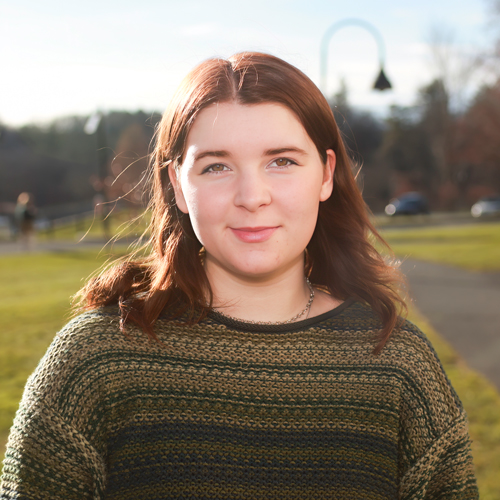
Pull Up a Chair
A Student Perspective on Free Speech
by Olivia Petty ’26
Meanwhile, Kanye West pledged to buy Parler, the self-described “premier global free speech app” whose lack of content moderation has made it a haven for bigotry. Though the purchase fell through, Ye, as he’s now known, lost multiple deals because of his antisemitic rants and praise of Hitler. His unapologetic antisemitism emboldened white supremacists in Los Angeles to hang a banner encouraging drivers to honk if they agreed with Ye.
After all this, should Congress do more to regulate social media companies? The challenge lies in the Communications Decency Act—initially passed in 1996 to try to regulate online pornography—and its Section 230. Section 230 treats social media enterprises “as newsstands rather than newspapers, so they’re not seen as content providers and are therefore not responsible for the content on their platforms,” Durbin explains.
He would like to see social media companies become better at policing themselves but also thinks Congress may need to take another look at reforming Section 230. Though there’s concern about unintended consequences of regulation that would treat social media companies as more akin to content producers, Durbin says, “It’s hard for me to believe that it would be worse than what we have now.”
For all its challenges, social media has also given a voice to people who may have lacked one before. Darnella Frazier, for example, was a 17-year-old bystander when she filmed the 2020 murder of George Floyd. She received a Pulitzer Prize citation for her role in the reckoning against police brutality.
“What was so fascinating about social media during that time is you had all these corporations and cultural institutions that came out with their statements of, ‘Oh, we support Black lives,’” Miranda says. “A lot of Black artists, Black workers, Black activists were like, ‘Wait a minute. Why are you giving money to so-and-so, and what’s your percentage of Black employees in your workforce, and the percentage of Black employees in your C-suites?’ Social media allowed a platform for everybody to talk back to some of the party lines.
News organizations and their supporters are trying fresh ways to deliver news and combat disinformation. MacArthur Foundation grantees include the Disinfo Defense League, a coalition of advocates and organizations that works with communities of color to “identify and disrupt the spread of bad information, particularly attempts to prevent communities from participating in democratic activities and accessing health care,” Kathy Im says. The foundation is also looking at the nexus of veterans’ communities, disinformation, and the rise of white supremacy.
The Los Angeles Times is experimenting with making Instagram and TikTok videos—some funny, others explanatory. After a recent City Council scandal involving leaked audio of several councilmembers making racist remarks, the Times broke it down on TikTok, using a visual style geared to the platform. Seeing the videos “does not require you to be an L.A. Times subscriber, to click through to our website, to pick up the newspaper, to do any of the things you would have traditionally needed to do,” Miranda says.
It’s too soon to know if the effort will succeed. But it’s one way, Miranda says, of meeting people where they are and engaging them on important civic questions with information they can trust.
Andrea Cooper ’83 is a frequent contributor to the Smith Alumnae Quarterly. She has written for The New York Times, Vogue, Sierra, Time, and many other national publications.
This story appears in the Winter 2023 issue of the Smith Alumnae Quarterly.
Democracy in Distress
A Special Series
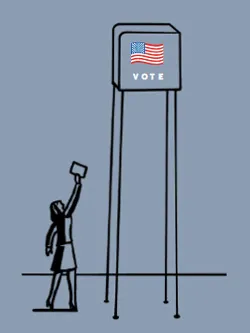
Introduction by Erin Pineda
What is democracy? This seemingly simply question has a seemingly obvious answer: It means, literally and etymologically, that the people rule themselves. But this straightforward reply leads to a tangle of thorny questions: How, exactly, are the people meant to rule themselves? What institutions and procedures enable the people’s rule? Are there limitations on the exercise of popular power—on what the people can elect to do?
PART 1: My Body, But Not My Choice by Andrea Cooper ’83
Navigating a post-Roe world with Candace Gibson ’07 of the National Latina Institute for Reproductive Justice and Genevieve Scott ’06 of the Center for Reproductive Rights.
PART 2: Block the Vote by Andrea Cooper ’83
Voter suppression laws are on the rise. But Smithies are fighting back, working to expand political participation by eliminating ballot restrictions and empowering disenfranchised voters.
PART 3: BANNED by Andrea Cooper ’83
The debate over what constitutes “appropriate” content jeopardizes the open exchange of ideas.
PART 4: When Culture Wars Come for Kids by Oliver Haug ’20
Transgender youth are being attacked by a barrage of new legislation. These Smithies have their backs.
PART 5: Big Little Lies by Andrea Cooper ’83
Disinformation is degrading our democracy. Smithies are striving to shore it up.
PART 6: Still Unequal by Cheryl Dellecese
Two generations of Smithies discuss the current state of the Equal Rights Amendment and why it matters now more than ever.
Illustration by Anthony Russo